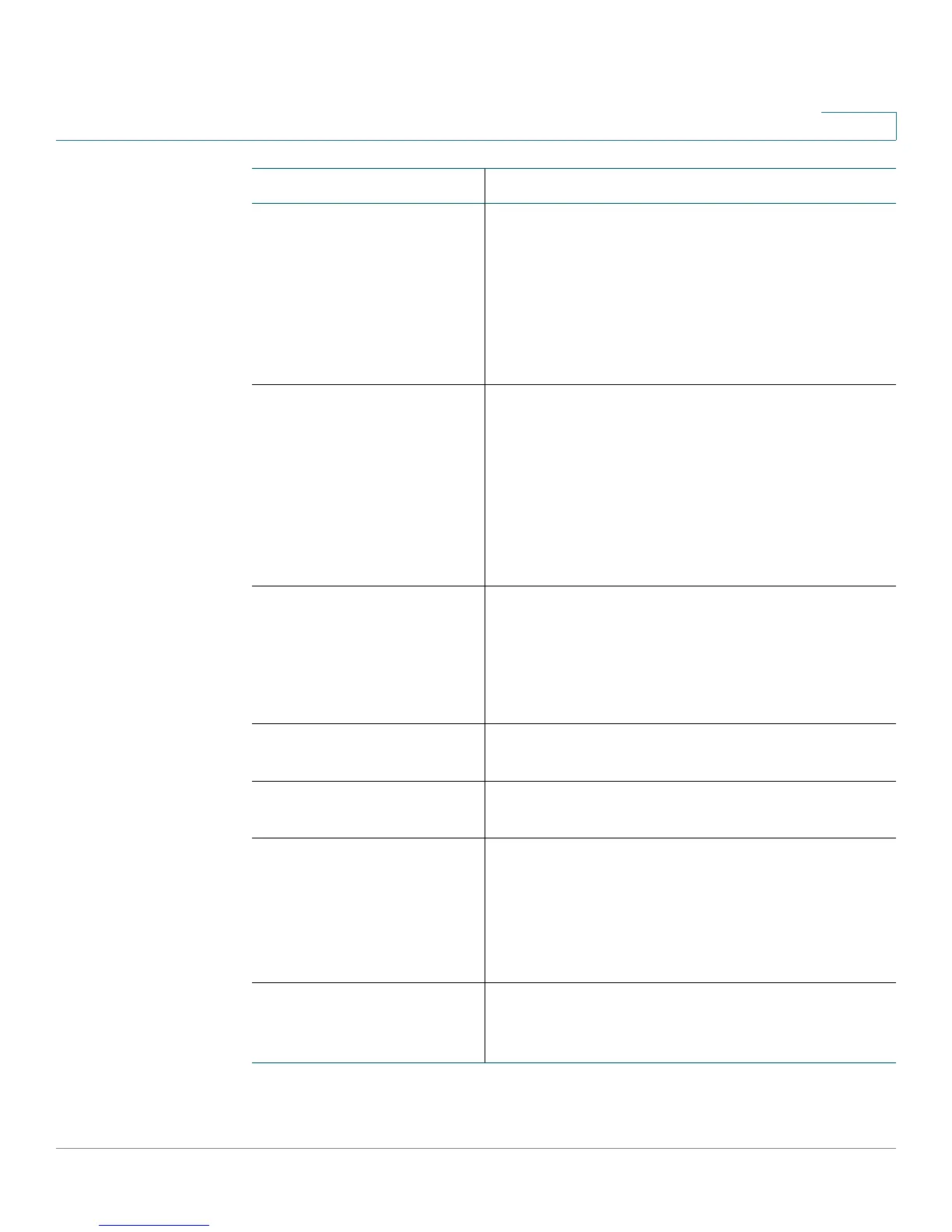Cisco SPA IP Phone Field Reference
SIP Tab
Cisco Small Business SPA300 Series, SPA500 Series, and WIP310 IP Phone Administration Guide 257
A
RFC 2543 Call Hold If set to yes, unit will include c=0.0.0.0 syntax in
SDP when sending a SIP re-INVITE to the peer to
hold the call. If set to no, unit will not include the
c=0.0.0.0 syntax in the SDP. The unit will always
include a=sendonly syntax in the SDP in either
case.
Defaults to yes.
Random REG CID On
Reboot
If set to yes, the Cisco IP phone uses a different
random call-ID for registration after the next
software reboot. If set to no, the Cisco IP phone
tries to use the same call-ID for registration after
the next software reboot. The Cisco IP phone
always uses a new random Call-ID for registration
after a power-cycle, regardless of this setting.
Defaults to no.
Mark All AVT packets If set to yes, all audio video transport (AVT) tone
packets (encoded for redundancy) have the
marker bit set. If set to no, only the first packet has
the marker bit set for each DTMF event.
Defaults to yes.
SIP TCP Port Min Specifies the lowest TCP port number that can be
used for SIP sessions. Defaults to 5060.
SIP TCP Port Max Specifies the highest TCP port number that can
be used for SIP sessions. Defaults to 5080.
CTI Enable The CTI interface allows a third-party application
to control and monitor the state of a phone that
has registered with the Cisco SPA9000. With this
interface, an application can control a phone to
initiate an outgoing call or answer an incoming call
with a mouse click from a PC.
Caller ID Header Provides the option to take the caller ID from
PAID-RPID-FROM, P-ASSERTEDIDENTITY,
REMOTE-PARTY-ID, or FROM header.
Parameter Description
